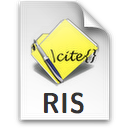

| ORIGINAL ARTICLE |
 |
 |
We investigated the contributions of low light intensity (LLI) and development stage on growth status, nutrient uptake, pigment contents, bioactive molecule contents and biological activities on carthamus tinctorius plants at two growth periods: vegetative and flowering periods in order to optimize natural culture conditions required to improve leaf antioxidant accumulation; while maintaining acceptable biomass production under LL conditions. For this purpose, an open field culture experiment was conducted on safflower leaves subjected to optimal light (250 Ámol m-2 s-1) or LLI condition (125 Ámol m-2 s-1). Shade constraint affected extensively the growth in terms of dry weight, RGR and water content particularly at vegetative stage. MDA and EL levels had a noteworthy increase particularly at flowering stage S reaching +34%in comparison to sun-exposed leaves. In addition TPC, TFC and TCT were mostly enhanced at full flowering stage than vegetative one. In the same line, the antioxidant activities were found to be enhanced at the FS stage as compared to the vegetative one. These results strongly indicate that LL induces the accumulation of secondary metabolites in C. tinctorius leaves by altering the phenolic synthesis pools, as well as for the up-regulation of antioxidant molecules defense
Key words: Low light intensity, vegetative stage, floral stage, phenolic pools, antioxidant activities

